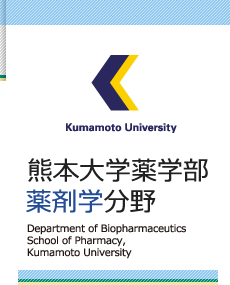Redox Biologyに論文が掲載されました。(AKI to CKDに対する一酸化炭素デリバリーの有効性)
A bioinspired carbon monoxide delivery system prevents acute kidney injury and the progression to chronic kidney disease.
Nagasaki T, Maeda H, Taguchi K, Yanagisawa H, Nishida K, Kobayashi K, Wada N, Noguchi I, Murata R, Sakai H, Kitagishi H, Saruwatari J, Watanabe H, Otagiri M, Maruyama T.
Redox Biol. 2022 Jun 22;54:102371. doi: 10.1016/j.redox.2022.102371. Online ahead of print.
Abstract
Renal ischemia-reperfusion (IR)-induced tissue hypoxia causes impaired energy metabolism and oxidative stress. These conditions lead to tubular cell damage, which is a cause of acute kidney injury (AKI) and AKI to chronic kidney disease (CKD). Three key molecules, i.e., hypoxia-inducible factor-1α (HIF-1α), AMP-activated protein kinase (AMPK), and nuclear factor E2-related factor 2 (Nrf2), have the potential to protect tubular cells from these disorders. Although carbon monoxide (CO) can comprehensively induce these three molecules via the action of mitochondrial reactive oxygen species (mtROS), the issue of whether CO induces these molecules in tubular cells remains unclear. Herein, we report that CO-enriched red blood cells (CO-RBC) cell therapy, the inspiration for which is the in vivo CO delivery system, exerts a renoprotective effect on hypoxia-induced tubular cell damage via the upregulation of the above molecules. Experiments using a mitochondria-specific antioxidant provide evidence to show that CO-driven mtROS partially contributes to the upregulation of the aforementioned molecules in tubular cells. CO-RBC ameliorates the pathological conditions of IR-induced AKI model mice via activation of these molecules. CO-RBC also prevents renal fibrosis via the suppression of epithelial mesenchymal transition and transforming growth factor-β1 secretion in an IR-induced AKI to CKD model mice. In conclusion, our results confirm that the bioinspired CO delivery system prevents the pathological conditions of both AKI and AKI to CKD via the amelioration of hypoxia inducible tubular cell damage, thereby making it an effective cell therapy for treating the progression to CKD.
Keywords: Acute kidney injury; Acute kidney injury to chronic kidney disease transition; Carbon monoxide; Red blood cells; Tubular cell damage.
年月別
- 2022年7月
- 2022年6月
- 2022年5月
- 2022年4月
- 2022年3月
- 2022年2月
- 2022年1月
- 2021年12月
- 2021年11月
- 2021年10月
- 2021年9月
- 2021年8月
- 2021年7月
- 2021年6月
- 2021年5月
- 2021年4月
- 2021年3月
- 2020年12月
- 2020年11月
- 2020年10月
- 2020年8月
- 2020年7月
- 2020年5月
- 2020年4月
- 2020年3月
- 2020年1月
- 2019年11月
- 2019年10月
- 2019年9月
- 2019年8月
- 2019年7月
- 2019年5月
- 2019年1月
- 2018年11月
- 2018年9月
- 2018年6月
- 2018年5月
- 2018年4月
- 2018年3月
- 2018年2月
- 2017年12月
- 2017年11月
- 2017年10月
- 2017年8月
- 2017年7月
- 2017年6月
- 2017年5月
- 2017年4月
- 2017年3月
- 2017年2月
- 2016年12月
- 2016年11月
- 2016年9月
- 2016年8月
- 2016年7月
- 2016年6月
- 2016年5月
- 2016年4月
- 2016年3月
- 2015年12月
- 2015年10月
- 2015年9月
- 2015年8月
- 2015年7月
- 2015年6月
- 2015年5月
- 2015年2月
- 2014年12月
- 2014年11月
- 2014年10月
- 2014年9月
- 2014年8月
- 2014年7月
- 2014年6月
- 2014年5月
- 2014年4月
- 2014年3月
- 2014年2月
- 2014年1月
- 2013年12月
- 2013年11月
- 2013年10月
- 2013年8月
- 2013年7月
- 2013年6月
- 2013年5月
- 2013年4月
- 2013年2月
- 2013年1月
- 2012年11月
- 2012年10月
- 2012年7月
- 2012年5月
- 2012年4月
















